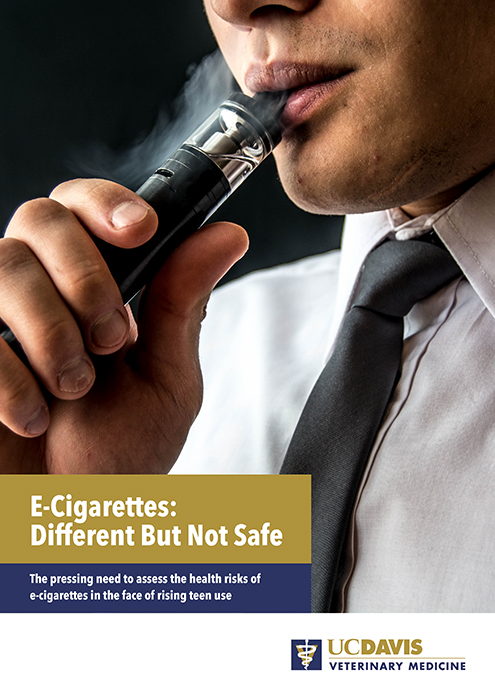Pamela J. Lein, PhD, Professor of Neurotoxicology at the University of California’s Davis/School of Veterinary Medicine details the pressing need to assess the health risks of e-cigarettes in the face of rising teen use
The use of e-cigarette use among teenagers underscores the need for effective risk communication to adolescents, in the view of the University of California’s Davis/School of Veterinary Medicine. By way of background, we find out that the 1965 patent for an electronic cigarette (e-cigarette) lauded its potential to help smokers quit tobacco. In recent times, however, we learn that the use and popularity of e-cigarettes have exploded.
In addition, we find out that while e-cigarettes were originally intended to replace or reduce conventional cigarette use by adult smokers, indeed, research findings from the U.S. suggest that the predominant users amongst adult consumers of tobacco products are young adults between the ages of 18 and 24. One interesting fact revealed here is that 42% of students vaped and 38% of those students felt they were addicted to nicotine, according to a recent survey from a high school in Colorado.
We also learn about a myth that all ingredients in e-liquids are safe, but actually, they consist mainly of glycerol and propylene glycol. Both of these are generally considered as safe for human ingestion, however, heating these chemicals promotes their breakdown into more toxic compounds such as formaldehyde and acrolein.
When it comes to e-liquid flavours, we find out that while these are a major draw for adolescent users, but some flavourings can be hazardous to human health. For example, the buttered popcorn flavour molecule, diacetyl, can cause irreversible pulmonary disease and bronchiolitis obliterans.
Another concern raised on e-cigarettes is battery design and safety, indeed, we know that faulty e-cig batteries can overheat and explode during use, transport and charging, which has resulted in severe burns to the user and fires in the surrounding vicinity.
This analysis also draws our attention to the regulation of e-cigarettes and concerns around their marketing, plus an in-depth look at health risks including poisoning, addiction, cardiovascular risks, obesity and cancer. One of the conclusions presented underlines the importance of teaching teens to be sceptical of information claiming that e-cigarettes are safe. I hope you enjoy reading the many useful insights that this analysis offers.


